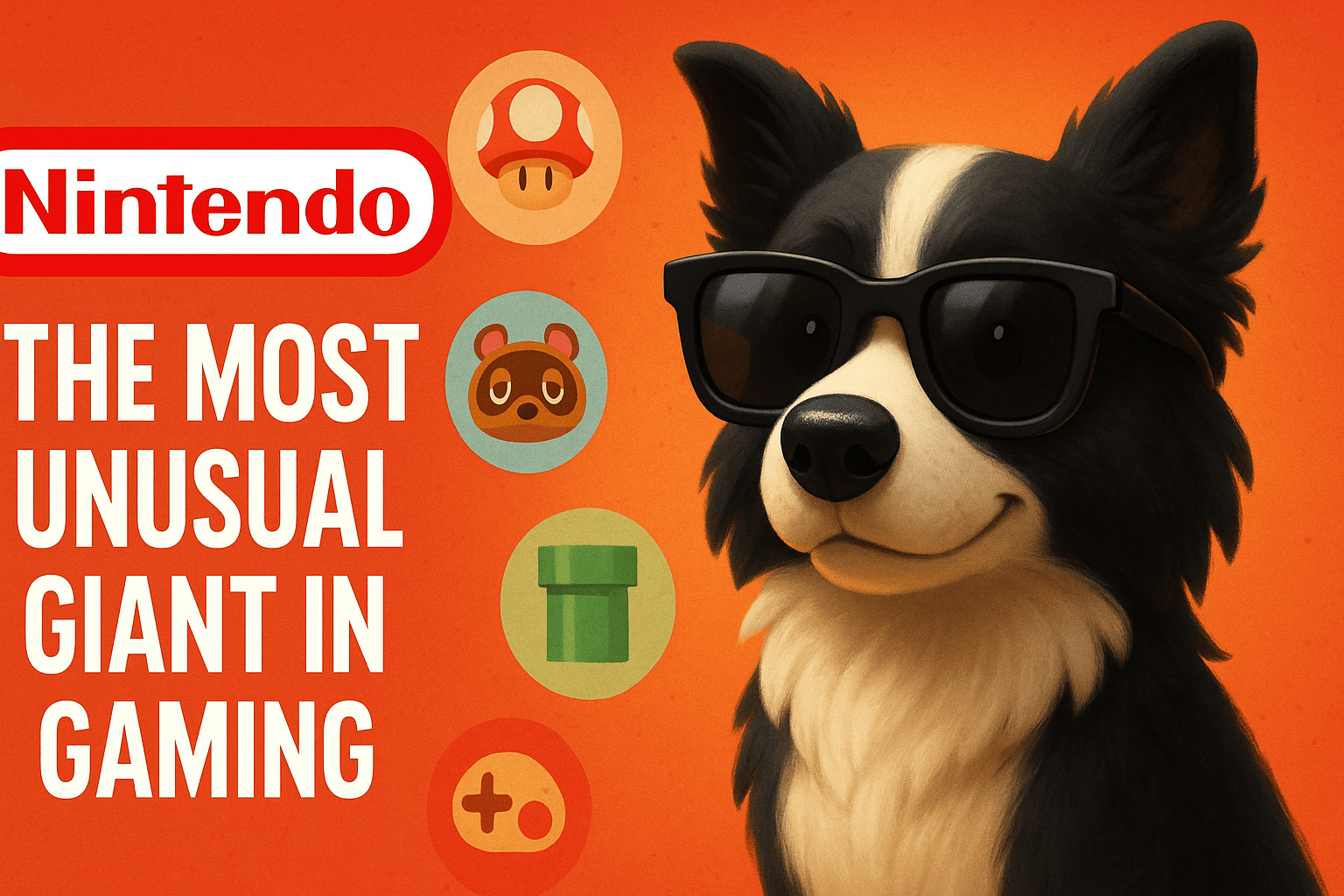Why a “Low-Tech” Company from Kyoto Keeps Winning the World’s Hearts
- The Giant That Refuses to Play by the Rules
- Power Isn’t Everything
- The Wii Revolution — “Even Grandma Can Play”
- Designing for Everyone — Not Just “Gamers”
- A President Who Took a Pay Cut — Not His Team
- Ideas From the Bottom Up
- They Embrace Failure — and Learn From It
- Not Just Games—Experiences
- Their Secret? A Different Definition of “Success”
- Why the World Still Loves Nintendo
The Giant That Refuses to Play by the Rules
In a world of ultra-realistic graphics, powerful processors, and billion-dollar budgets, one company remains stubbornly… different.
It’s not chasing specs.
It’s not based in Silicon Valley.
It’s not even trying to dominate online gaming.
That company is Nintendo.
And for over 40 years, it’s been defying expectations—and still winning.
Power Isn’t Everything
When you think of cutting-edge gaming hardware, you probably think of Sony or Microsoft.
Nintendo? Not so much.
The Wii? Weaker than Xbox and PlayStation.
The DS? Low-res screens, no fancy multimedia features.
Even the Switch? A handheld device in a world of 4K gaming rigs.
But here’s the twist: all of them were massive global hits.
Why?
Because Nintendo doesn’t chase power.
It chases fun.
The Wii Revolution — “Even Grandma Can Play”
When the Wii launched in 2006, it shocked the industry.
Instead of chasing teenage gamers, Nintendo aimed for… families.
The controller? Just a motion-sensing stick.
Swing it, and you’re playing tennis.
Tilt it, and you’re racing in Mario Kart.
Suddenly, grandparents were bowling in their living rooms.
Families were gathering around the TV—not to watch, but to move.
This wasn’t just gaming.
It was cultural transformation.
And it made the Wii one of the best-selling consoles of all time.
Designing for Everyone — Not Just “Gamers”
Nintendo’s approach to game design is radically different from most Western studios.
They don’t assume players are experts.
In fact, they design for the complete beginner.
It’s common for Nintendo developers to bring in non-gamers and children to test early builds.
If someone gets stuck or bored, they don’t blame the player—they fix the game.
Sometimes, they throw the whole design away and start over.
Why?
Because for Nintendo, clarity and joy always beat complexity.
A President Who Took a Pay Cut — Not His Team
In 2014, Nintendo faced a financial downturn.
But instead of cutting jobs, then-president Satoru Iwata did something unthinkable in the West:
He cut his own salary in half.
He said:
“If developers work in fear, they won’t create good games.”
That simple act of leadership earned global respect.
Not just for his character—but for his understanding of creativity.
Because Nintendo knows: trust builds great games.
Ideas From the Bottom Up
In most companies, innovation comes from the top.
At Nintendo, the best ideas often come from the bottom.
The iconic “Mario jump” sound?
Created by a junior audio designer.
The hit game Splatoon?
Pitched by a team of young developers in their twenties.
Management didn’t dictate the ideas.
They listened.
And that’s why Nintendo keeps surprising us.
They Embrace Failure — and Learn From It
Not everything Nintendo touches turns to gold.
The Virtual Boy? A total failure.
The Wii U? Confusing and poorly marketed.
But here’s the key: Nintendo never gives up.
They study their failures.
They learn.
And they try again.
The Switch is living proof.
It borrowed lessons from both the DS and the Wii U—and became one of the most successful consoles in history.
Not Just Games—Experiences
Nintendo doesn’t just make games.
They make experiences.
Games that make you laugh.
That bring your family together.
That make you shout and cheer in sync with your friends.
The Switch isn’t a box of specs.
It’s a bridge—between people, places, and generations.
And that’s what sets Nintendo apart.
Their Secret? A Different Definition of “Success”
While the rest of the industry chases realism and power, Nintendo chases… emotion.
Surprise.
Laughter.
Connection.
They’re not trying to win E3.
They’re trying to win your living room.
And guess what?
It works.
Why the World Still Loves Nintendo
Nintendo may not be the most powerful company in gaming.
But it may be the most human.
In a time when games are becoming more complex, more expensive, and more exclusive, Nintendo continues to ask one simple question:
“Is this fun?”
And that, more than any GPU or frame rate, is why Nintendo keeps winning.



